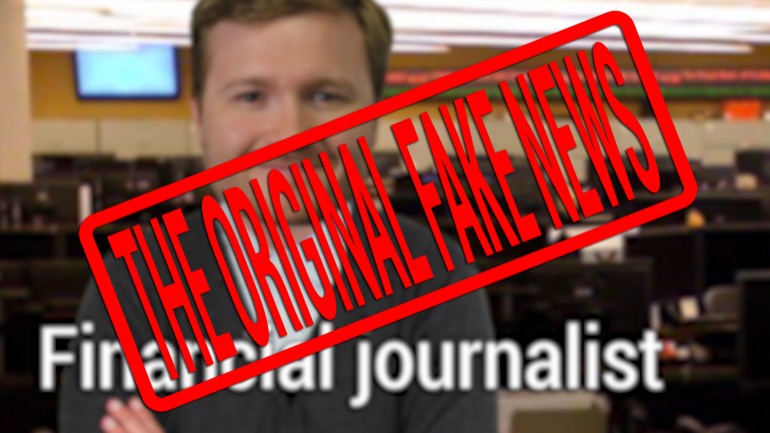Well, it's a technique used to value companies. Or at least it was…in the stone age. The 50s, maybe.
It basically says that a company’s value is fully contained in the cash dividends it distributes back to investors.
This model is only useful for its historical relevance. Back in the old-timey caveman days, when there was essentially no research of real merit being done on the performance of investments of whatever flavor, the dividend discount model was the best thing investors had to value and investment in a company.
And remember: in those days, companies paid real dividends that were a meaningful percentage of the total value of the company.
Example:
A company pays a dollar a share this year in dividends. Historically, it has raised dividends at 3% a year. The dividend discount model discounts back to present value. A few odd things are worth noting in this horse-and-buggy-era formula. The Dividend Discount Model ignores the terminal, or end value, of the company. Like...say 20 years from now, the company is sold. The dividends are all that are really focused on. Seem strange? Well, maybe...but let’s say the discount rate is 10%, and the risk-free rate is 4%, for a total of 14% a year discounted back to the present. Doing the math, just looking at the terminal value of, say, $100M in a sale to be made 20 years from now, you take 1.14, put it to the 20th power to reflect 20 years of discounted valuation…and you say 1.14 to the 20th power is about 13.7. So to get the present value of $100M 20 years from now using this discount rate, you would divide the $100M by 13.7…and that means that the $100M is roughly $7.3M of value today.
Yeah, that’s a big haircut.
The formula focuses a lot on near-term dividend distribution, and it’s really more interesting as a relic of original financial research than anything directly useful today.
And if you find this interesting, then...we may have a gig for you here at Shmoop Finance Central.
Related or Semi-related Video

Finance: What is an Accumulated Dividend...9 Views
finance a la shmoop what is an accumulated dividend okay you know what
a dividend is companies generally commit to paying it when they have so much [Example of dividend meaning on a 100 dollar bill]
extra cash profit that they really don't know what to do with the dough yeah nice
place to be in the case of a preferred stock the dividends aren't just a
optional-ish they operate more like bond interest only with a catch
that is dividends on preferred stock can in fact be halted without the company
being repossessed by the debt holders like in the case where the company falls [Prize wheel lands on hard times]
on hard times or it wants to preserve its cash to buy a competitor or it just
wants another jet with a water slide thing on it well yeah it can halt its [Person slides down a jet slide]
dividend in those cases and well there are two types of preferred stock in this
realm the ones that pay cumulative dividends and the ones that don't
cleverly named non-cumulative say a company has halted dividends from its
preferred for three and a half years and it was paying five bucks a quarter in [Dividend distribution graph]
dividends from those cumulative preferred well if it was to resume
paying dividends on them it would first have to pay all back fourteen quarters
worth of dividends before it began to issue more dividends or pay them to its
preferred holders that is it owed three years times four quarters or twelve
quarters plus half a year or two quarters for a total of fourteen
quarters at five bucks a quarter a share that's five times fourteen or seventy [Formula of non-cumulative dividends]
dollars a share in back cumulative dividends big obligation but it has to
pay that amount before it can resume dividend payments why would a company
have a cumulative feature in its preferred dividend obligation well
because investors forced it to do so or they wouldn't invest they were worried [Person swipes away stacks of money]
that the preferred dividends might be just some merrily stopped and then the
investors would have little or no return on their investment in the preferred and
this can be a problem for companies that have fallen on hard times they are
essentially made illiquid in that they can't afford to pay the back dividends [Example of illiquid meaning]
on the preferreds and they can't raise more capital with this blight on their
record of having stopped paying a divvy well most [Non cumulative stock stickers appear on a table]
furred stocks are non-cumulative and if companies decide to just stop paying
them they can but if they do it's kind of like they've reneged on a handshake [Two guys giving a handshake]
and you know investors talk so like good luck to the company ever trying to raise
capital again from the cold cruel outside world yeah welcome to Wall
Street [Wall Street road sign]
Up Next
What's a dividend? At will, the board of directors can pay a dividend on common stock. Usually, that payout is some percentage less than 100 of ear...
How do you calculate rates of return? Calculating rate of return on an investment that pays dividends can be a bit tricky. You need to look at the...
What is the Dividend Discount Model? Valuation of stocks can take numerous forms. One way in which one perspective on undervalued stocks is determi...


